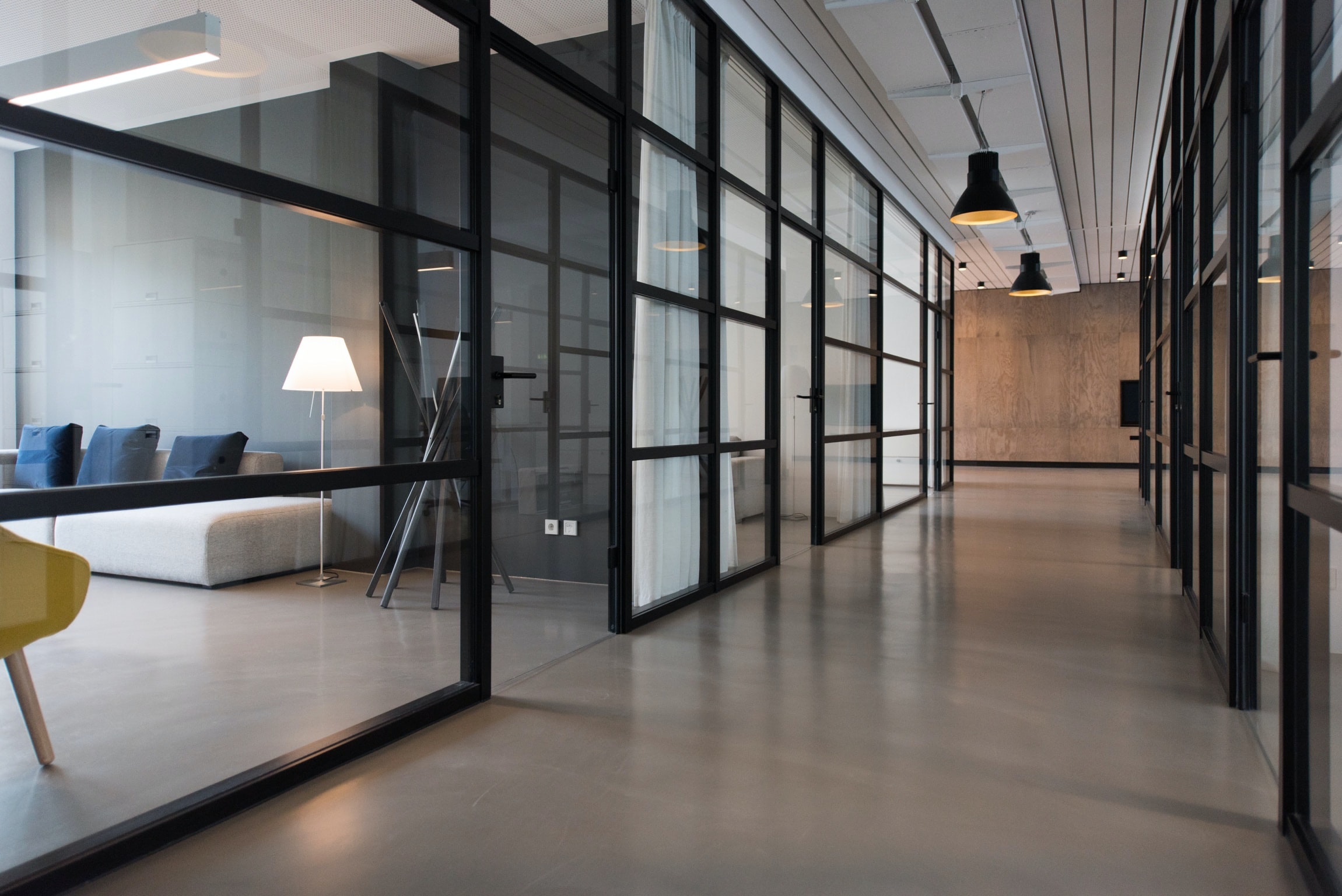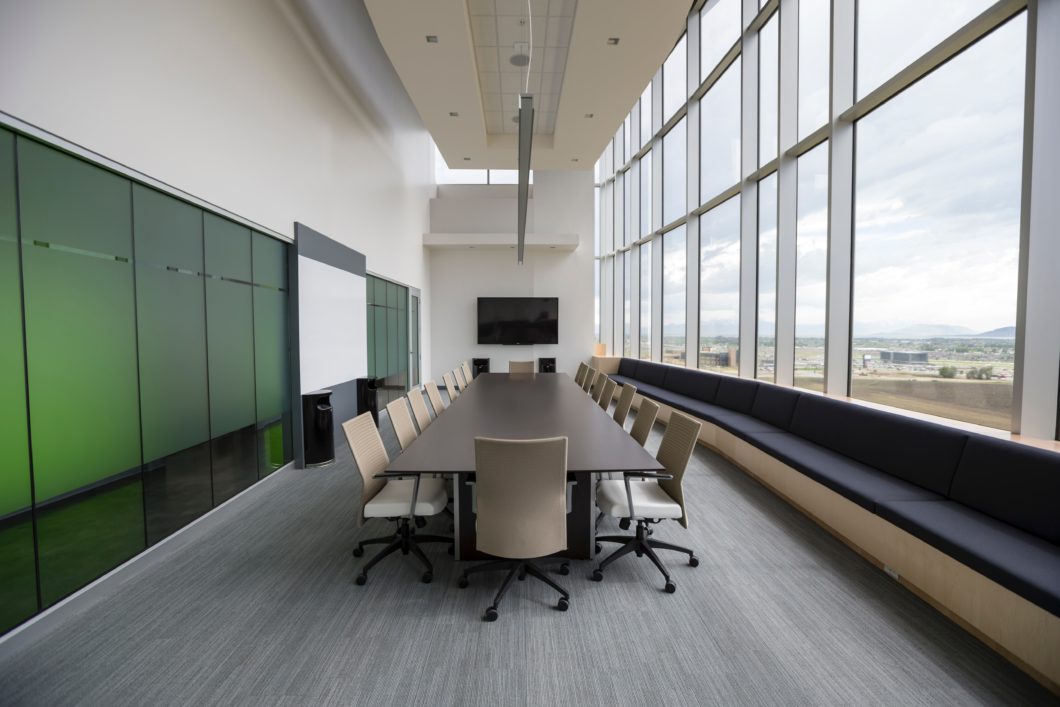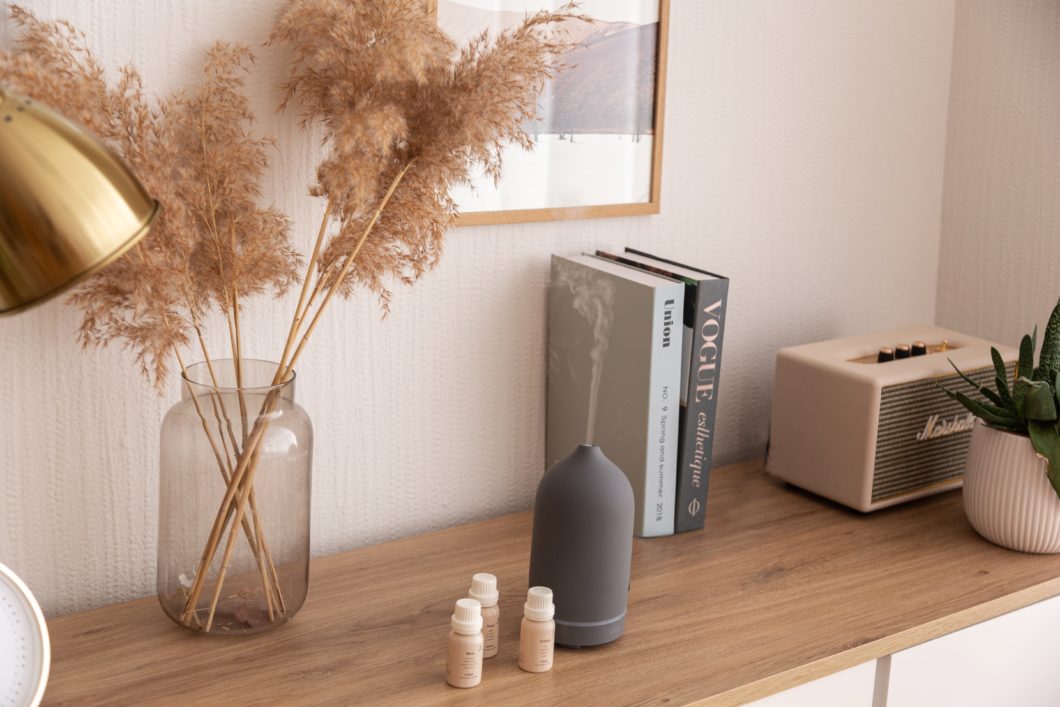Productivity levels can make or break a business – working efficiently saves money, having more engaged staff creates a better culture and a healthier bottom line helps the business grow. Despite this, research has shown that 85% of employees aren’t fully engaged at work, culminating in a huge drop in productivity.
Here at Making Moves, we’ve helped many businesses design and fit out their new office spaces with productivity in mind – and of course we’ve learned a thing or two along the way. Keep reading to find out all the little changes you can make in your workplace to help boost employee productivity.
AMPLIFY NATURAL LIGHT
Often overlooked by employers, natural lighting plays a big role on productivity in the office. Natural light has been proven to make people not only happier, but healthier too – being essential to our circadian rhythms, vitamin D intake and mental clarity. This in turn boosts our ability to focus, leading to higher levels of productivity.
Poor lighting, on the other hand, can cause fatigue, eyestrain, headaches and overall irritability. Low levels of light have even been linked to developing depression. This mental and physical strain amounts to increased spending on employee sick leave.
Therefore, investing in improving natual lighting within an office, or simply amplifying the natural lighting you already have, is essential for boosting productivity in the workplace. If your office has few windows, use mirrors or reflective furniture to increase the amount of light reflecting through the space. Lighter paint colours also help reflect more light and help a room appear brighter. In addition, full spectrum lightbulbs are designed to mimic midday sunlight and so trick the brain into staying alert and productive throughout the day.
CONSIDER THE IMPACT OF ROOM COLOUR ON PRODUCTIVITY
 As weird as it may sound, the colour of your office can greatly impact the productivity of your team. Certain colours can encourage different emotions in employees, from concentration to creativity, so it’s important you choose the colours within your office strategically, to really maximise productivity.
As weird as it may sound, the colour of your office can greatly impact the productivity of your team. Certain colours can encourage different emotions in employees, from concentration to creativity, so it’s important you choose the colours within your office strategically, to really maximise productivity.
Here’s a little breakdown of colour theory and how it can be used to boost office productivity:
- White: A blank slate, allowing for expression, reflection and deep concentration. White elicits feelings of cleanliness (another productivity booster – but more on that later) though when used too much it can feel sterile and uninspiring.
- Black: Bold and luxurious, black demands respect – empowering workers. However, overuse can make a workplace feel dark and unwelcoming.
- Green: A calming colour connected with growth, abundance and creativity.
- Blue: A balanced colour linked to serenity, integrity and knowledge.
- Purple: Associated with luxury, power and ambition – helping motivate employees to reach their full potential. Purple also increases feelings of pride, independence and creativity – all traits of a productive office.
HOW DOES NOISE LEVEL IMPACT PRODUCTIVITY?
It goes without saying that an office so loud that you can’t hear yourself think will negatively impact office productivity, but likewise, so can an office that’s unnervingly quiet. It’s all about finding out how your team likes to work and striking the right balance.
Not only are high noise levels distracting, reducing our ability to concentrate and increasing the number of mistakes we make, but it can even have negative effects on our physical and mental health – increasing our heart rate, blood pressure and generally tiring us out.
Open-plan offices are the biggest culprit for producing noise pollution, as they allow soundwaves to bounce and echo across the room. Instead, create small, quiet workspaces for employees to focus within. Insulating doors and walls can also help reduce outside noise, and biophilic design (aka plants) can help to diffuse sounds.
On the other hand – if your office is too quiet – try using music to boost office productivity. Classical music has been found to increase productivity and is even used in certain McDonalds branches to encourage acceptable behaviour.
IS THERE AN OPTIMUM TEMPERATURE FOR PRODUCTIVITY?
Overheating an office not only racks up your energy bills, but it can also pose a safety hazard. Extreme heat leads to symptoms of dizziness, headaches, nausea and of course physical fires – all of which undoubtedly make it a lot harder to stay productive. Yet an office that is too cold can lead to loss of concentration and tiredness within employees, as more of their energy goes on warming themselves up.
So, is there a perfect temperature for office productivity? A temperature that is not too hot, but not too cold either – a temperature that even Goldilocks herself would be proud of? Well, in the UK, there is a minimum requirement that workplaces never drop below 16 degrees Celsius – but as everyone’s baseline temperature varies this may still feel too cold for some. Instead, research suggests that 21 degrees is the optimum temperature to boost creativity and productivity in the office – and that anywhere between 20 and 25 degrees is a good temperature to work at.
WHICH ROOM SCENTS BOOST PRODUCTIVITY?

The same way certain smells can take you back to a certain time or place, they can also evoke different psychological states. Here’s a roundup of the best smells to boost office productivity:
- Rosemary: has positive effects on mood, memory and learning – making employees feel more alert.
- Lavender: is relaxing and refreshing, helping improve concentration.
- Jasmine: re-energises staff, giving them the energy they need to crack on with those bigger jobs
- Lemon: improves cognitive function, helping workers avoid mistakes
- Peppermint: good for reducing stress and prolonging attention – often used to treat headaches
- Coffee: yep, turns out you don’t even need to drink the stuff to feel more alert and raring to go.
Many of these scents also have positive effects on employee’s health, reducing the amount of sick leave they may need to take. For even better results, use different scents in different rooms, depending on the specific mood you want to encourage – perhaps rosemary to keep staff awake in meeting rooms, and jasmine for a more creative, collaborative setting.
POOR VENTILATION CAN IMPACT EMPLOYEE PRODUCTIVITY
Employers are required to ensure that workplaces are ventilated by sufficient air quality of fresh or purified air, though despite these requirements, many workplaces still suffer from poor ventilation. The Covid pandemic really shed light on the importance of good ventilation for employee’s health, but it is also beneficial for the productivity of an office.
Rooms with poor ventilation can feel humid and stuffy, causing headaches, tiredness and worsening allergy symptoms. In addition, spaces with high CO2 levels can reduce cognitive function, leading to lower productivity and higher sick leave.
Good ventilation creates a comfortable environment for a happy and healthy workforce. One study reported that improving ventilation in offices improved decision-making, strategizing and planning. Improving ventilation is relatively low cost, but there are many natural ways to improve air quality, such as opening windows and having plants in the office that are both economical and eco-friendly.
THE BENEFIT OF BIOPHILLIC DESIGN
A bit of a mouthful, but simply put biophilic design refers to any features that mimic the beauty of the natural world – such as plants, water features, natural lighting and natural patterns and textures. All of which not only make your office look nicer; they also positively affect the health and wellbeing of employees and as a result, boost productivity.
In the same way being outside has positive effects on mental health, so has bringing the outside in – with office greenery found to reduce stress and anxiety, tiredness and increase creativity within workers. Having plants in the workplace also benefits employee’s physical health – improving air quality by up to 75%. One study reported that employees in green certified offices benefited from a 26% boost in cognitive function and have 30% fewer sickness related absences. Who’d have thought a few plants could do so much to boost office productivity?
A HEALTHY WORKFORCE IS AN ALERT AND PRODUCTIVE WORKFORCE
We all know how important it is to stay healthy on an individual level, but it’s also worth considering the ways that the health of your workforce can benefit, or limit, productivity in the office. As after all, happy, healthy workers are a lot more alert, engaged and motivated.
Smoking, lack of exercise and a poor diet can all make it harder for employees to stay productive – as these workers are likely to suffer from low energy levels and tiredness, as well as poor health, meaning they may require more sick leave. What we eat has a huge impact on the way that we feel – with one study finding that increasing fruit and veg consumption can lead to higher levels of productivity, work performance and enhanced confidence – and even help companies perform better on the stock market. So as popular as you may be bringing in cake and biscuits to the office, swap to healthy snacks to help boost productivity.
Offering cycle to work schemes, gym memberships, and online counselling can all help foster a healthy workplace. At Making Moves we provide all our employees with medical insurance, that covers mental health care and therapy.
PROVIDE A VARIED LAYOUT FOR DIFFERENT MODES OF WORK
The layout of an office is key to productivity – but it’s not one size fits all. To maximise productivity in your office, reflect on the ways your employees like to work and the different spaces that would accommodate them.
Open plan offices are a great way of speeding up communication between employees and encouraging collaboration and teamwork. Though incorporating smaller, more private spaces for small groups to brainstorm, or for individuals who want to focus on a task will also really help boost productivity.
Having an office with a creative design, such as with decorative artwork or plants, can also make the workplace more engaging – as opposed to a bland, boring space. Cramped workspaces, too much noise and uncomfortable desks can all make employees more susceptible to distractions.
ENSURE YOUR DIGITAL INFRASTRUCTURE PROMOTES PRODUCTIVITY
There’s no point in taking the time to adjust the lighting, ventilation and noise levels to boost productivity if your digital infrastructure is holding your staff back. There is nothing worse than a frozen screen or a lagging computer when you have a to-do list a mile long. Not only do technical difficulties and delays slow your team down, they can also make your business look bad.
To ensure productivity, make sure you have a strong Wi-Fi connection and a secure server. With many offices operating a hybrid model of working, it’s essential that remote workers can effectively participate in meetings. Also, prepare your team with enough IT infrastructure like plugs and computer mice to avoid disruptions if people are hotdesking – second screens are also said to increase productivity by 42% – so make sure your team has all the technology they need to succeed.
OFFICE ERGONOMICS MUST BE CONSIDERED
An ergonomic office is one that is designed to be as efficient and as comfortable as possible, where tools and design features are chosen to complement the way that staff work best. Having the right tools to work with and being comfortable within your workspace are fundamental requirements of any office and can greatly impact productivity levels.
Ergonomic office chairs encourage workers to sit upright, supporting their back, neck, shoulders and hips. Adjustable furniture can be used by many different workers so can be useful in shared areas or when hot-desking. Some ergonomic desks can also turn into standings desks, encouraging workers to spend less time sitting.
Ergonomic keyboards and mice can help prevent muscle strain – and the height and angle of monitor and display screens can reduce eye, neck and back pain. All these focus on making workers as comfortable as possible – and therefore less susceptible to distractions.
STREAMLINE COLLABORATION BETWEEN TEAMS FOR INCREASED PRODUCTIVITY
Collaboration and effective teamwork are key to office productivity. Collaborative office spaces encourage staff to share new ideas, offer different perspectives and provide advice to one another. Open-plan offices are great at streamlining communication between teams – as employees can grab their colleagues at their desks rather than wait for an email reply. Collaborative features such as meeting pods and breakout areas can really help streamline communication in an office. The quicker teams are able to communicate, the quicker things get done.
A silo mentality where separate departments do not share information with each other really slows business down. Avoid overcomplicating procedures with too much ‘red tape’ – and if a meeting could have been an email, just make it an email. As more businesses adopt a hybrid model of working, it’s also essential offices facilitate digital collaboration – using efficient tools and software to do so.
ALLOW FOR PERSONALISATION AND EMPLOYEE INPUT IN THE DESIGN PROCESS
Here at Making Moves, we’re a big advocate of consulting members of staff when designing office spaces – as understanding the ways in which they like to work allows you to design a space that complements them. After all, who better to have a say in the design process than the people who will be using the space the most. Not only does this maximise the efficiency of the office space, and therefore boost productivity, it also makes the team feel heard and valued, making them more motivated to work hard for the company.
As well as having a say in the wider design process, studies have found personalisation of individuals’ workspaces can also lead to higher productivity – by creating a deeper emotional connection to the company and keeping workers engaged. So, whether it’s a family photo, or a potted plant, personal items can do more than just look nice.
REMOVE CLUTTER AND DISTRACTIONS TO PROMOTE IMPROVED FOCUS
Following on from our last point, one or two personal items can of course help engage workers, but too many can quickly clutter a workspace. Minimalism may be the latest buzzword in interior design, but it is also a great way of boosting workplace productivity. After all it’s true what they say, a tidy desk is a tidy mind.
Reducing clutter in an office can help to limit distractions and improve concentration – a study by Princeton university found that having multiple objects on your desk can overwhelm our brains, making it harder to focus on the task at hand. Minimal workspaces are also said to inspire creativity and innovation, giving the brain more space to think up fresh ideas. In addition, minimalism is easier and quicker to clean, and as a result can reduce sicknesses spreading in the workplace. So, minimise clutter to maximise productivity, it really is that simple.
INCORPORATING ART INTO YOUR WORKPLACE CAN IMPROVE PRODUCTIVITY AND CREATIVITY
As we briefly mentioned earlier, not only can nice artwork make your office look like a cool, fun place to work, it can also help boost the creativity and productivity of your team. Art has the power to inspire people, reduce stress and even increase well-being so incorporate it into your office space to help maximise productivity.
According to research by Dr Craig Knight, who studied psychology of working environments, people are 15% more productive in spaces with artwork, compared to those that contain only the bare necessities. The right artwork can help create a positive distraction for workers, stimulating their brains to think deeper, leading to greater mental clarity, creativity and innovation. In addition, employees often feel proud to work in office spaces that are more aesthetically pleasing, motivating them to contribute to the best of their ability.
CONCLUSION
So, there you have it, all the tips you could possibly need to help boost productivity in your workplace. Who knew how beneficial a diffuser and a few plants could be – but every little helps when it comes to creating an environment that fosters concentration and hard work.
Here at Making Moves, we regularly put all these tips into practice – helping many businesses design their new office spaces with productivity at their core. For more support with relocation consultancy or office fit-outs for your business, get in touch today.
🚚 Source, negotiate and manage entire office moves.
🏢 Dispose, sublet or redesign your office.
🖊️ Professional, independent support.



 As weird as it may sound, the colour of your office can greatly impact the productivity of your team. Certain colours can encourage different emotions in employees, from concentration to creativity, so it’s important you choose the colours within your office strategically, to really maximise productivity.
As weird as it may sound, the colour of your office can greatly impact the productivity of your team. Certain colours can encourage different emotions in employees, from concentration to creativity, so it’s important you choose the colours within your office strategically, to really maximise productivity.

